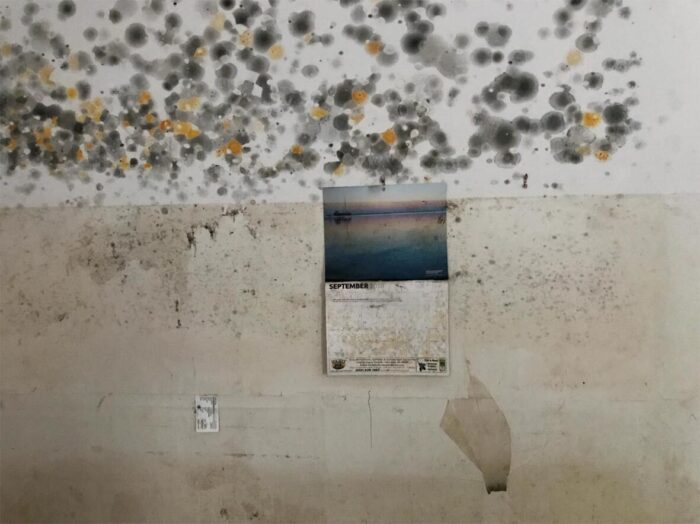The news has been grim. The unprecedented 2020 hurricane season is barely in our rearview mirror but it’s just a taste of what’s to come. The impacts of climate change are not distant points on the horizon, they are all around us.
Unpredictable weather patterns and rapid development in urban areas are making current flood maps purveyors of misinformation about risk. And, it comes as no surprise, low income and communities of color are not only more vulnerable to these impacts but also have historically been pushed into areas of greater environmental risk.

Flood lines from a home in Wilmington, North Carolina after Hurricane Florence.
At the same time, technology is advancing. Never before have more Americans had more information about more of the risks to which they are exposed. Yet we aren’t reducing that risk in meaningful ways especially when it comes to flooding.
The National Flood Insurance Program communicates risk in terms of 100- and 500-year floodplains (areas with a 1% and 0.2% annual probability of flooding, respectively). But these are not accurate predictors of risk. Since 2005, more than 30% of flood damage has occurred in areas outside the mandatory flood insurance zone. After Hurricane Harvey, roughly 80% of homes that flooded were outside mandatory flood zones.
Flooding is the most costly and most common disaster risk to American communities. Nearly every disaster involves some type of flooding, yet many Americans don’t know that flood insurance is different than homeowners insurance and must be purchased separately.
- Even for those not living in a mandatory flood insurance zone, it’s important to have flood insurance. Floods can, and do, happen virtually anywhere it rains.
- Flood insurance is the only coverage that will protect the home’s value and possessions in the event of a flood. Homeowners and renters insurance will not.
- Flood insurance is affordable. Many policies can be purchased for as little as $3 per day. It’s important to note, there’s a 30-day waiting period before flood insurance coverage goes into effect.
Zack Colman, of Politico, wrote about the potential for another mortgage crisis resulting from very low flood insurance coverage rates outside of the designated 100-year floodplain. These outside areas flood regularly during heavy rainstorms and hurricanes.
In October, NPR wrote about the lack of transparency around flood risks for homes and what this means for homeowners. Most recently, the Natural Resource Defence Council and the Association of State Floodplain Managers have petitioned FEMA for updated construction standards in floodplains.
Regardless of FEMA’s determinations, we as individuals can take action now, there are actions we can take today to understand our risk, protect ourselves and ensure the information is shared and used more widely to reduce risk.
Technology is making more information available but it is neither equally nor easily accessible to all. We’re working to change that by working with corporations, NGOs and governments to prepare individuals and communities before disaster, but there is more to be done. Nonprofits, lenders and others working with homeowners in environmentally vulnerable communities need to do more than our fair share to help vulnerable communities take steps to reduce risk. It all begins with flood insurance.
Reese May, is the chief strategy and innovation officer for SBP, a national disaster resilience and recovery organization. He leads SBP’s disaster preparedness and recovery efforts across the country, advises state and local decision-makers on effective long-term disaster recovery programs and advocates for policy change at the federal level. He is a Truman National Security Fellow.

